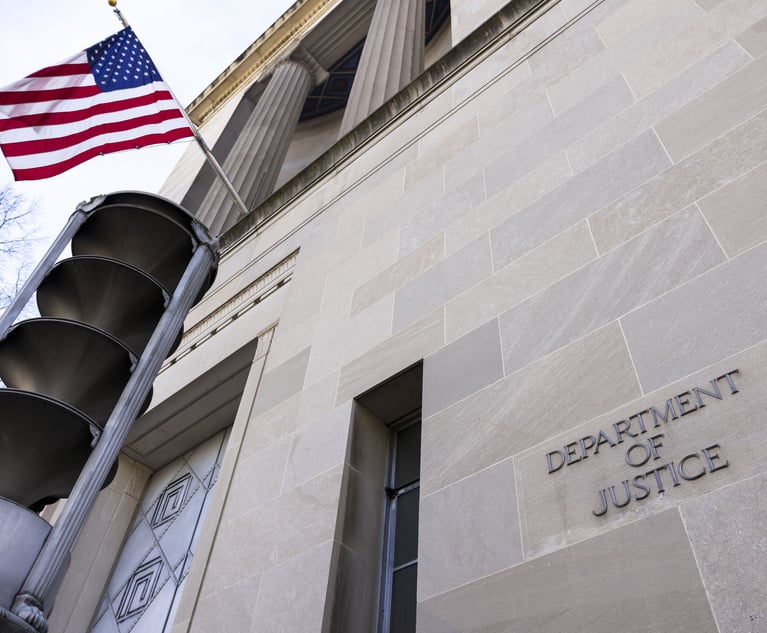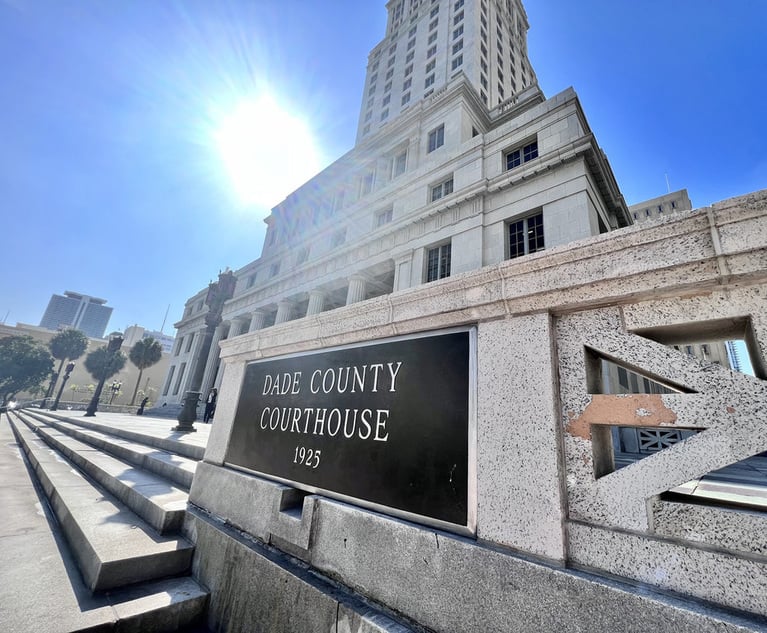Law Grad Employment Rate Improves Thanks to Smaller Class
The class of 2017 posted gains in jobs requiring a law degree, but the number of jobs in which a law degree offers an advantage declined significantly.
April 20, 2018 at 02:24 PM
2 minute read
The employment picture for new law graduates improved in 2017, marking the fourth straight year that a higher percentage of fresh J.D.s found legal jobs.
More than three-quarters of the class of 2017—75.3 percent—secured full-time, permanent jobs that require bar passage or jobs for which a law degree offers an advantage, within 10 months of leaving campus, according to new national figures released Friday by the American Bar Association. That's up from 72.6 percent from the previous graduating class.
But like the previous three years, that employment gain resulted from a significantly smaller pool of law graduates entering the job market, not from growth in the number of entry-level legal jobs. Slightly fewer than 35,000 people graduated from ABA-accredited law schools in 2017. That's a nearly 6 percent decline from the more than 37,000 law graduates in 2016.
The biggest gains were among traditional attorney jobs for which bar admission is required. The actual number of those jobs increased from the previous year, albeit slightly. Nearly 69 percent of 2017 law graduates found those jobs, up from 64.5 percent in 2016.
The percentage of graduates in full-time, long-term bar pass required jobs—which are often viewed as the gold standard for law jobs, and the positions most sought after—went from 61.8 percent in 2016 to 66.2 percent in 2017, a 4.4 percent increase.
Jobs for which a law degree offers an advantage did not see similar growth, however. Just 11.8 percent of 2017 graduates landed in those positions within 10 months, down from 14.1 percent the previous year, according to the ABA. In actual numbers, there were 1,100 fewer J.D.-advantage jobs reported.
That decline is notable in that law schools have increasingly been marketing the versatility of a law degree and pitching J.D. advantage jobs as new employment avenues. Many jobs in the growing realm of legal technology are billed as J.D. advantage positions.
On a positive note, 2017 saw a 15 percent decrease in the number of new law graduates who were unemployed and still looking for work 10 months after leaving campus. That cohort accounted for 7.9 percent of all recent graduates, compared to nearly 9 percent the previous year.
This content has been archived. It is available through our partners, LexisNexis® and Bloomberg Law.
To view this content, please continue to their sites.
Not a Lexis Subscriber?
Subscribe Now
Not a Bloomberg Law Subscriber?
Subscribe Now
NOT FOR REPRINT
© 2025 ALM Global, LLC, All Rights Reserved. Request academic re-use from www.copyright.com. All other uses, submit a request to [email protected]. For more information visit Asset & Logo Licensing.
You Might Like
View All
Lawsuit Against Major Food Brands Could Be Sign of Emerging Litigation Over Processed Foods
3 minute read
Government Attorneys Face Reassignment, Rescinded Job Offers in First Days of Trump Administration
4 minute read
Law Firm Sued for $35 Million Over Alleged Role in Acquisition Deal Collapse
3 minute read
4th Circuit Upholds Virginia Law Restricting Online Court Records Access
3 minute readTrending Stories
Who Got The Work
J. Brugh Lower of Gibbons has entered an appearance for industrial equipment supplier Devco Corporation in a pending trademark infringement lawsuit. The suit, accusing the defendant of selling knock-off Graco products, was filed Dec. 18 in New Jersey District Court by Rivkin Radler on behalf of Graco Inc. and Graco Minnesota. The case, assigned to U.S. District Judge Zahid N. Quraishi, is 3:24-cv-11294, Graco Inc. et al v. Devco Corporation.
Who Got The Work
Rebecca Maller-Stein and Kent A. Yalowitz of Arnold & Porter Kaye Scholer have entered their appearances for Hanaco Venture Capital and its executives, Lior Prosor and David Frankel, in a pending securities lawsuit. The action, filed on Dec. 24 in New York Southern District Court by Zell, Aron & Co. on behalf of Goldeneye Advisors, accuses the defendants of negligently and fraudulently managing the plaintiff's $1 million investment. The case, assigned to U.S. District Judge Vernon S. Broderick, is 1:24-cv-09918, Goldeneye Advisors, LLC v. Hanaco Venture Capital, Ltd. et al.
Who Got The Work
Attorneys from A&O Shearman has stepped in as defense counsel for Toronto-Dominion Bank and other defendants in a pending securities class action. The suit, filed Dec. 11 in New York Southern District Court by Bleichmar Fonti & Auld, accuses the defendants of concealing the bank's 'pervasive' deficiencies in regards to its compliance with the Bank Secrecy Act and the quality of its anti-money laundering controls. The case, assigned to U.S. District Judge Arun Subramanian, is 1:24-cv-09445, Gonzalez v. The Toronto-Dominion Bank et al.
Who Got The Work
Crown Castle International, a Pennsylvania company providing shared communications infrastructure, has turned to Luke D. Wolf of Gordon Rees Scully Mansukhani to fend off a pending breach-of-contract lawsuit. The court action, filed Nov. 25 in Michigan Eastern District Court by Hooper Hathaway PC on behalf of The Town Residences LLC, accuses Crown Castle of failing to transfer approximately $30,000 in utility payments from T-Mobile in breach of a roof-top lease and assignment agreement. The case, assigned to U.S. District Judge Susan K. Declercq, is 2:24-cv-13131, The Town Residences LLC v. T-Mobile US, Inc. et al.
Who Got The Work
Wilfred P. Coronato and Daniel M. Schwartz of McCarter & English have stepped in as defense counsel to Electrolux Home Products Inc. in a pending product liability lawsuit. The court action, filed Nov. 26 in New York Eastern District Court by Poulos Lopiccolo PC and Nagel Rice LLP on behalf of David Stern, alleges that the defendant's refrigerators’ drawers and shelving repeatedly break and fall apart within months after purchase. The case, assigned to U.S. District Judge Joan M. Azrack, is 2:24-cv-08204, Stern v. Electrolux Home Products, Inc.
Featured Firms
Law Offices of Gary Martin Hays & Associates, P.C.
(470) 294-1674
Law Offices of Mark E. Salomone
(857) 444-6468
Smith & Hassler
(713) 739-1250









